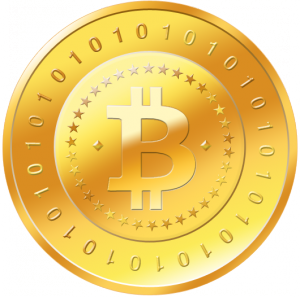Where Does the Time Go?

Another year of bitcoin has come and gone. Another year that bitcoin believers thought would surely produce the fabled “mass adoption“, propelling bitcoin to new heights. Both in price and in utility. Another year that bitcoin has maintained fringe status, and new implementations like ethereum and financial blockchains promised to advance the technology. The price of bitcoin is up, that’s certainly good news for believers. But bitcoin is still stuck in limbo, consistently unable to define a use case, so has anything changed this year?
Bitcoin moved up in price, down in future supply, and laterally in real adoption. Debate over block size continues to split the community, and vicious debate over the future of the cryptocurrency has produced significant, and lasting divides. Censorship by Theymos and his cronies remains in place, triggering a “with us or against us” response from many bitcoin believers toward their own peers. Chinese exchanges still dominate the exchange landscape, and their massive volume remains unverified. (read: fake) Traders continue to produce charts and graphs swearing the price will double by (insert future time/day/year), but no predictions seem to support a drop in price. In fact, any prediction other than blind optimism is regarded as “shilling” for banks or governments. Of course, bitcoin believers are absolutely sure of a banking conspiracy against bitcoin, so that hasn’t changed either.
Voices from inside and outside bitcoin has been offering solutions for some of the perceived issues in bitcoin. Promising attempts like Segregated Witness and Lightning Network have sort of materialized, with bitcoin believers citing their testnet usage as proof of their existence. SegWit is currently awaiting approval from over 95% of the blockchain to be implemented, and LN is still found only in testnet form. Adoption of changes has been slow, and it remains unclear if these changes will result in an uptick in bitcoin usefulness.
What bitcoin really comes down to is use case. For believers, bitcoin is a competitor for the dollar. For the majority of average people, bitcoin is a difficult to understand and even more difficult to use piece of technology that makes a fleeting appearing in the news every month or so, often due to a scam. Bitcoin believers preach about being their own bank, but people have been enjoying the utility of banks in many forms for years. The safety net of transferring some risk to a bank by storing value, either cash or commodities, does not exist with bitcoin intentionally. The ease of transferring value with dollars is easier than with bitcoin, and carries implicit insurance. For those that do not predict the demise of the current political and financial system, this is a worthwhile insurance policy. Fledgling use cases like remittances and derivatives have rapidly run out of steam as the problem became more logistical than mathematical.
The use case for most bitcoin believers has become political motivation rather than daily use. A few individuals own a significant amount of bitcoins, and their motivation is surely to foster an environment that creates value for bitcoin, or allows bitcoin to be exchanged for dollars. Note the massive disparity in exchange volume for the few regulated exchanges versus their unregulated competition. The trend in 2016 has been the drowning of the minority voice in bitcoin: the technologists, the enthusiasts, the curious. Polarization in bitcoin has run progress off the rails, with little discernible progress for mainstream users. Folks with lots of coins need to be able to move them. Folks that believe in doing away with the government need bitcoin to replace the dollar. Folks that just want to get rich quick only care about the price. There is no driving force in bitcoin for developing a consumer-focused technology with broad appeal.
The year 2016 hasn’t moved the needle toward mass adoption: Bitcoin simply isn’t useful to mainstream users. Without leadership that can move bitcoin forward, the cryptocurrency promises to remain a niche interest. Frankly, that may be what many current bitcoin users want. A version of money that empowers them to feel they are subverting the government, part of a movement not just an economy! As bitcoin drifts away from technical interest toward ideology, the dream of mass adoption will likely remain just a dream. Or maybe someone can steer the ship another direction in 2017.
Image credit – Public domain image by Web-dev-chris CC0 1.0 Universal (CC0 1.0)

![[Guest Post] The True Use Cases for Bitcoin and Its Role in Banking the Unbanked](https://coinreport.net/wp-content/uploads/2019/04/Ray-Youssef-Paxful-CEO-400x230.jpg)











I suspect that further uptake will eventually come, and not in any way that is currently being predicted. The parallel is Linux. Available since 1991 and quite practical, reliable and useful since shortly after that, it repeatedly ‘failed’ accord to the media.. who probably still think it is a niche software tool. However, that ‘niche’ now includes being the underlying OS of over 80 of the smartphones in the world – Android.
Bitcoin may end up on the same trajectory for adoption.
If you think this is a sentence: “A version of money that empowers them to feel they are subverting the government, part of a movement not just an economy!” – then you really shouldn’t be writing.
You won’t believe that one feature can helps you to operate easily your windows 10 desktop.Yes Hey cortana is the best est feature of Microsoft that you need to enable in to your desktop by learning here how to activate this function.Thank you so much.
The use case for most bitcoin believers has become political motivation rather than daily use.
https://reviewsrabbit.com/best-hoverboard-2019-the-most-exciting-self-balancing-scooter-to-have/